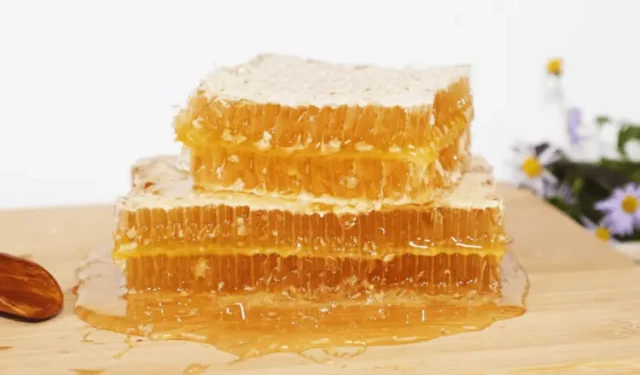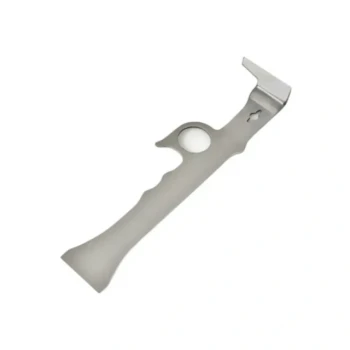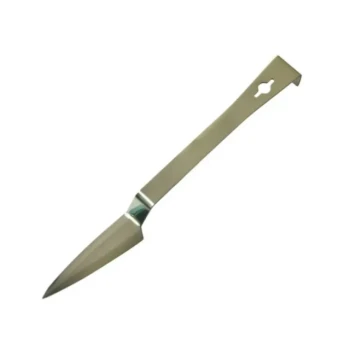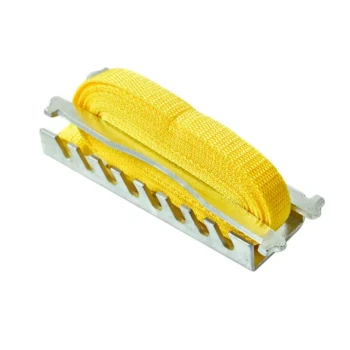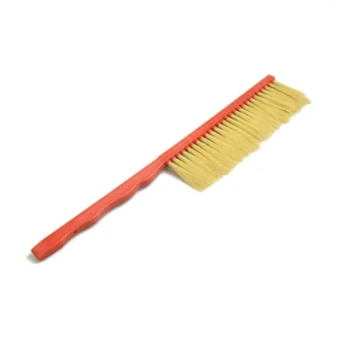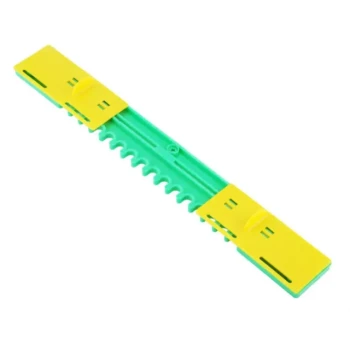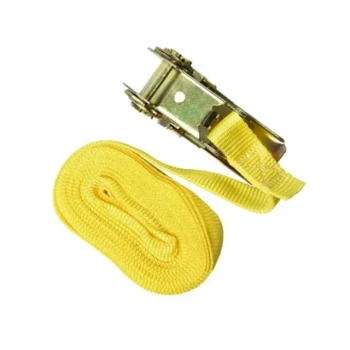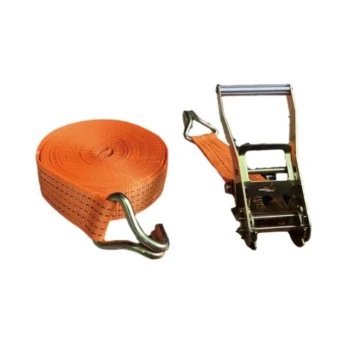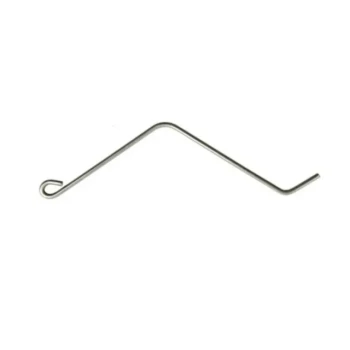Modern beekeeping with Flow Hive technology simplifies honey extraction, but true success requires mastering the complete ecosystem management cycle. This guide unpacks the often-overlooked aspects of hive stewardship—from nutritional strategies to ethical harvesting—that determine long-term colony health and productivity.
Flow Hive Fundamentals Reexamined
Nutritional Management Beyond Basic Feeding
While Flow Hives reduce comb disturbance, bees still need proactive nutritional support. Research shows colonies with balanced diets produce over 30% more surplus honey and exhibit stronger disease resistance.
Key practices:
- Supplemental feeding: Use 1:1 sugar-water ratios in early spring to stimulate brood rearing, shifting to thicker 2:1 syrup in fall for winter stores
- Pollen substitutes: Critical during dearth periods; opt for protein-rich patties when natural pollen sources dip below 15% availability
- Water stations: Place within 50 feet of hives with floating corks to prevent drowning—bees consume nearly a gallon per day during peak season
Pro Tip: Monitor consumption rates. Abrupt changes in feed intake often signal pest pressures or queen issues.
Integrated Pest Defense Strategies
Flow Hives’ unique design requires tailored pest management. The reduced hive inspections (a benefit of clear frames) mean beekeepers must employ other monitoring methods.
Three-tier protection system:
- Physical barriers: Screen bottom boards deter 80% of varroa mites while improving ventilation
- Biological controls: Introduce Hypoaspis miles mites to combat small hive beetles naturally
- Treatment thresholds: Apply organic acids only when varroa counts exceed 3 mites per 100 bees—test monthly with alcohol washes
Disease Surveillance Protocols
The convenience of Flow Hives shouldn’t replace regular health checks. American foulbrood spores can persist for decades, making prevention critical.
Early warning signs:
- Sunken, perforated cappings (potential foulbrood)
- K-wing deformities (indicate viral infections)
- Spotty brood patterns (queen or nutrition issues)
Maintain a diagnostic kit with:
- Refractometer for checking honey moisture (ideal: 17-18%)
- Digital scale for tracking weight fluctuations
- Magnifying loupe for detailed comb inspections
Operational Best Practices
Seasonal Maintenance Calendar
| Season | Critical Tasks | Flow Hive Adjustments |
|---|---|---|
| Spring | Split overcrowded colonies | Add Flow supers as nectar flow begins |
| Summer | Monitor swarm cells weekly | Rotate frames to prevent crystallization |
| Fall | Install mouse guards | Reduce hive entrance to 4" width |
| Winter | Insulate northern sides only | Remove empty supers to reduce space |
Hive Inspection Checklist Optimization
Even with observation windows, conduct full inspections every 3-4 weeks:
- Smoker prep: Use cool smoke from pine needles or burlap—hot smoke triggers defensive behavior
- Frame sequence: Always inspect outer frames first where pests often cluster
- Queen spotting: Save center frame for last to minimize disturbance to brood nest
Ethical Harvesting Considerations
The Flow Hive’s on-demand honey taps demand responsible practices:
- Leave 30-40 lbs of honey per colony for winter survival in temperate zones
- Time extractions for mid-morning when most foragers are active
- Sanitize taps with food-grade alcohol between uses to prevent cross-contamination
Ready to Elevate Your Apiary? HONESTBEE’s commercial-grade equipment helps distributors and large-scale beekeepers implement these best practices efficiently. From insulated hive wraps to precision-refined smokers, our wholesale solutions support every phase of professional hive management. Contact our apiary specialists today for bulk pricing on seasonally curated supply kits.
Remember: The Flow Hive isn’t just a tool—it’s a commitment to rethinking traditional beekeeping through the lens of bee welfare and sustainable yield.
Visual Guide
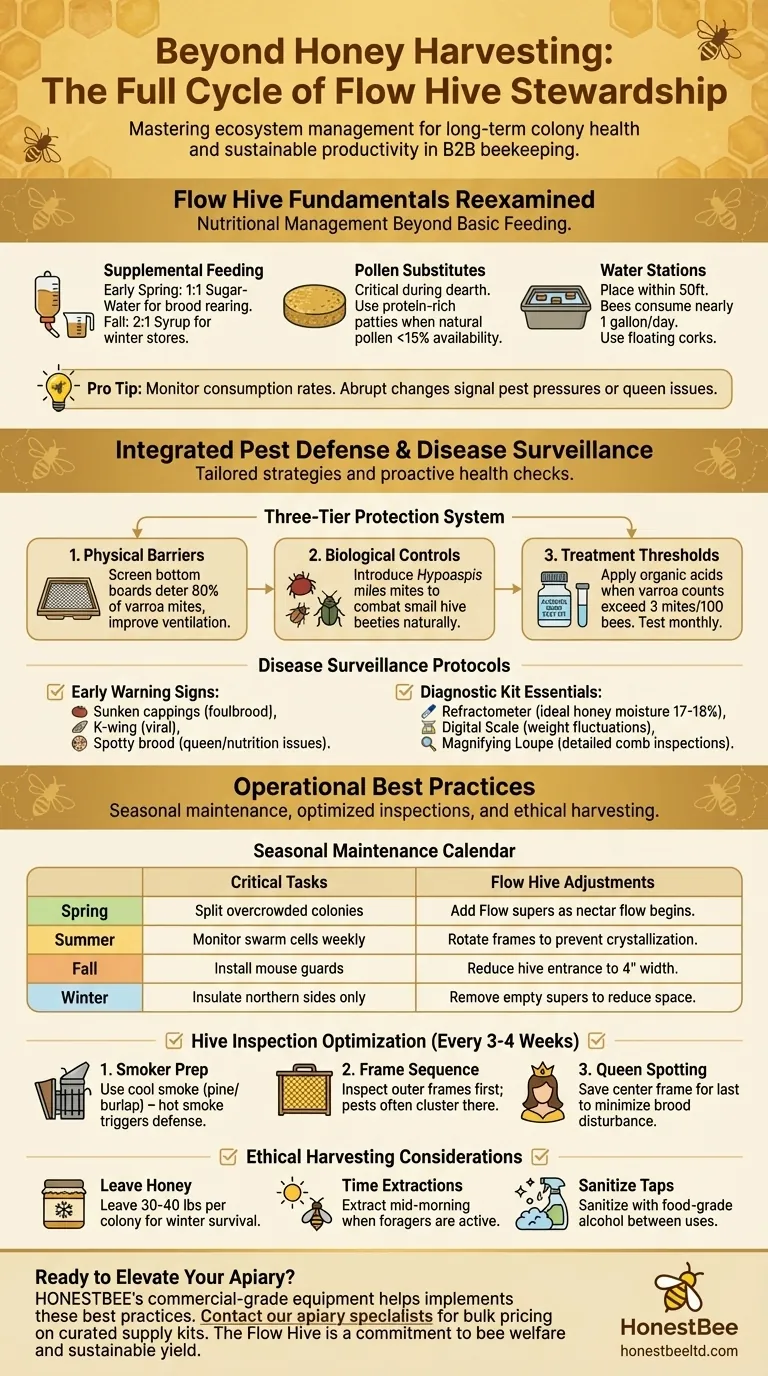
Related Products
- Honey Flow Garden Bee Hive Flow Hive Best Beehive for Beginners
- Automatic Honey Flow Beehive 4 Frame Mini Hive for Beekeeping
- HONESTBEE Advanced Ergonomic Stainless Steel Hive Tool for Beekeeping
- HONESTBEE Professional Long Handled Hive Tool with Precision Cutting Blade
- Professional Galvanized Hive Strap with Secure Locking Buckle for Beekeeping
Related Articles
- How to Choose Between Top Bar and Langstroth Hives for Effortless Beekeeping
- How to Choose the Best Beehive Type for Your Climate and Terrain
- The Tyranny of a Quarter-Inch: How Bee Space Defines the Modern Hive
- How Beekeepers Can Stop Ants Naturally Without Harming Their Hives
- Comprehensive Guide to Attracting Bees to a Hive
